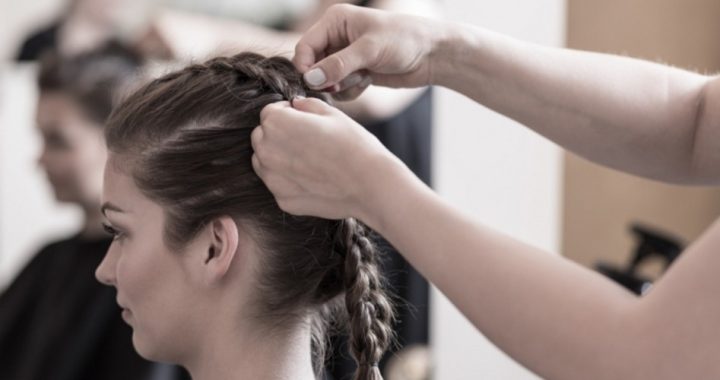
An entrepreneurial little girl wants to sell mistletoe to help her parents pay for her braces. No way, says the government, unless she gets a license to sell flora.
A woman helps her family save money by braiding the hair of her female relatives who can’t afford to have their hair cared for at expensive salons. Not any more. Local officials order her to stop braiding her relatives’ hair until she completes a government-mandated cosmetology course.
Dog walkers all over New York City are facing fines of up to $1,000 for roaming around town with Rover without permission of the appropriate government agency.
Many people, while they may be sympathetic to the situation of the individuals adversely affected by these occupational regulations, support such policies as the best way of protecting the public from people providing sub-par service and from business owners whose practices might spread disease due to their lack of legal hoop jumping.
The issue of occupational licensure, as with so many other areas where government intrudes upon the right of individuals to acquire property (in this case, money) and to use their skills and talents in the acquisition of that property, the red tape does little to keep the public safe and does much to protect the privileges of the approved class.
Noted economics professor S. David Young put it plainly, writing, “Occupational regulation has limited consumer choice, raised consumer costs, increased practitioner income, limited practitioner mobility, and deprived the poor of adequate services—all without demonstrated improvements in the quality or safety of the licensed activities.”
In a video report filed on Reason.com, John Stossel commented on the true purpose of the licensing policies.
“The government increasingly demands that you get a license before you are allowed to work in your chosen profession,” Stossel reports. “In the 1950s, only about one in 20 workers needed the government’s blessing to do their jobs. Today, that figure is more than one in three.”
What happens, Stossel concludes, is not that the quality of service is improved, but that the price of those services is increased. Government-monopolized occupational licensure leaves the least fortunate without an avenue to prosperity, the tolls for traveling that avenue being too high to pay, particularly for those without a job in the first place. Yes, that’s irony.
In a previous story on the stifling of individual initiative caused by occupational licensing, I wrote:
Once the authorities mandate official approbation of this or that line of work, those who comply with such strictures demand the licensing regulations be perpetuated so as to drive up the cost they can charge for their services. Members of the public will perceive the possession of a government-issued license as some sort of sign of superior quality of service, thus preventing unlicensed practitioners from making a living, until such time as they decide to play ball and petition the power-brokers for permission to earn a living.
Peering into the committee meetings and city council deliberations that result in these licensure regulations, Adam Smith famously wrote, “People of the same trade seldom meet together even for merriment and diversion, but the conversation ends in a conspiracy against the public or some contrivance to raise prices.”
Here’s Professor Young testifying of the truth of Adam Smith’s statement:
Because licensing laws restrict entry, it is not surprising that such laws affect the income of licensees. William D. White’s 1978 study of clinical laboratory personnel found that stringent licensing laws increased the relative wages of licensees by 16 percent. Lawrence Shepard’s 1978 study compared average fees for dental services between states that recognize out-of-state licenses and those that do not. Controlling for other factors, he showed that the price of dental services and the average incomes of dentists were 12 to 15 percent higher in nonreciprocity states.
Who are the people meeting together, as Adam Smith calls them, in a “conspiracy against the public” to raise prices? The government — who never met any human endeavor it didn’t want to control — and corporate service providers that won’t stand for competition from individuals able to provide a valuable service, but unwilling (although it is usually that they are unable) to clear the hurdles placed in their path by the government-corporate partnership.
Finally, thank goodness these occupational licensing “laws” weren’t always there to disincintivize innovation or you might be dead of some now-eradicated disease or riding to your government-approved job on horseback. Here’s the last word from Professor Young:
In many fields advances have resulted from the very “crackpots,” “quacks,” and “outsiders” who have no standing in the profession and whom licensing seeks to eliminate. Thomas Edison, who had little formal education, could not be a licensed engineer under today’s guidelines. Likewise, with the current education requirement, Mies van der Rohe and Frank Lloyd Wright would not qualify to sit for the architects’ certifying examination. The leaders in the fight to establish inoculation as a cure for smallpox in colonial America were Cotton Mather and his fellow clergymen; their leading opponents were doctors. As Dennis S. Lees wrote in Economic Consequences of the Professions: “Had retailing been organized like the professions, supermarkets with lower costs and prices… could never have emerged. Indeed, had the professions been dominant through manufacture and trade over the past two centuries, we would never have got to the horse-and-buggy stage, let alone beyond it.”
Photo: Thinkstock



